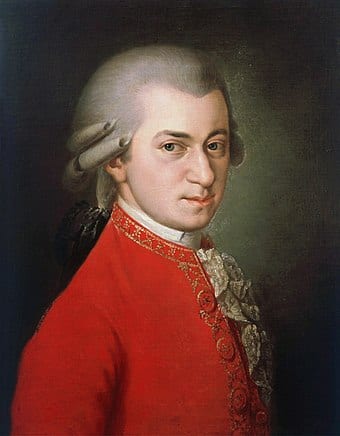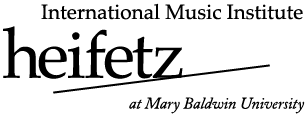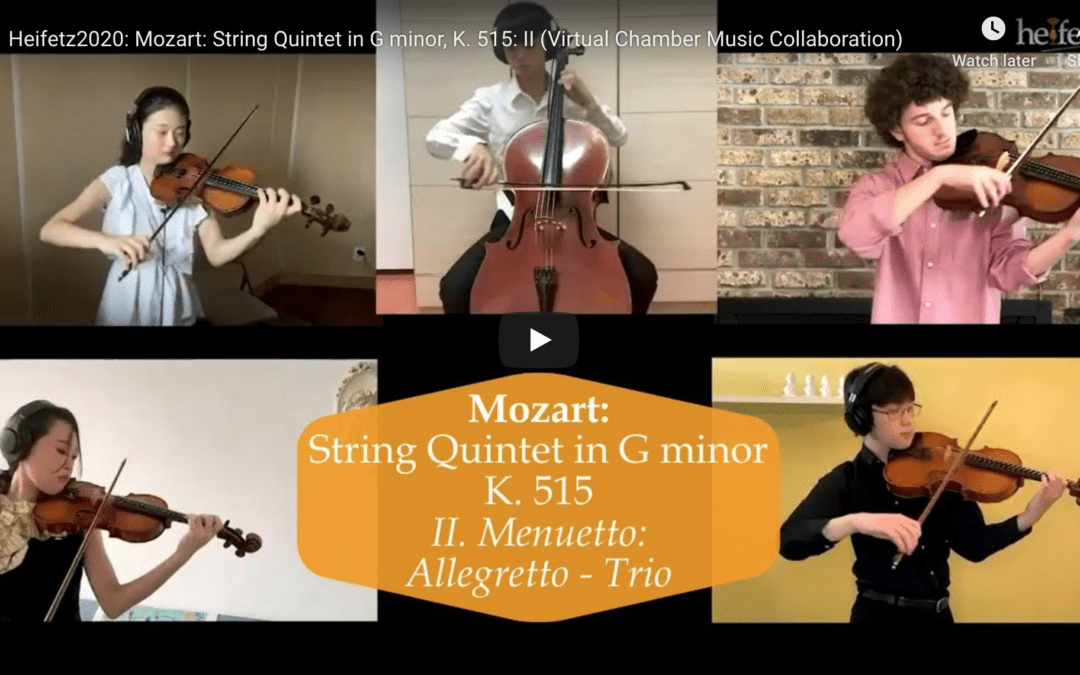Video of the Week:
The Microphone Does Not Lie – Making the Most of Mozart View All Videos of the Week“Treat the recording studio as a laboratory for conceptual thinking — rather than as a mere tool.”
– Record Producer Brian Eno
From the outset of #VirtualHeifetz2020, we were determined to put together performances by chamber ensembles. But we weren’t sure whether the technology, the approach, and the players themselves would be up to the challenge. It was hard enough to put together solo and piano-accompanied works in the online environment!
A full-scale chamber music performance in the virtual world, however, is several notches up in the degree of difficulty. To be sure, high-level chamber music instruction is a hallmark of the Heifetz Institute. But the acute sensitivity needed to respond to changes in dynamics, tempo, and timbre would push our process to its limits.
But as became customary during this extraordinary summer, our students, staff, and faculty more than met the challenge. Students in the Ashkenasi/Kirshbaum Chamber Music Seminar, under Artistic Director Nicholas Kitchen’s leadership, were trained in a systematic method for creating musical collaborations across distances that are artistically meaningful and faithful to our communicative mission. We call it the checkerboard approach..
The quintet we’re featuring today brings together three students residing in Asia – violinists Hannah Kim and Hyejin Kim, both in Seoul, South Korea, and cellist En-Chun (Eugene) Lin in Wandan Township, Taiwan – with American violists Jack Kessler (Miami, FL) and Gene Hotta (Torrance, CA).

For their 7,000 mile-collaboration, the members selected the stormy second movement of Mozart’s masterful String Quintet in G minor, K. 515. It’s an incredibly powerful movement full of contrasting moods and textures. Mozart wrote it in 1787, during a particularly dark time of his life – he would die just four years later at the age of 35.
Violist Jack Kessler describes it thusly in his introduction: “The brooding, agitated, and turbulent minuet is followed by the heavenly and divine trio, which brings a breath of fresh air in contrast.”
Jack goes on to express a very important sentiment for our summer experience – “The mircrophone does not lie. Every little detail is picked up, which means that communication and unification are keys to being successful.” While that is a truism known to recording artists for as long as the technology has existed, we have made sure it is especially true for our students by providing them with a “technology toolkit,” including studio microphones and headphones. The also received extensive training across a variety of digital audio workstations to ensure that they could capture the most accurate representation and nuances of their playing.
Yes, that can be a humbling process, but it can also yield a remarkable attention to detail in one’s own playing and that of the ensemble that may not be possible during an in-person rehearsal or performance.
To illustrate this level of sensitivity with which the performers use the technology not as an obstacle to overcome or a mere tool, but as a laboratory for conceptual thinking, note how they approach what Musicologist Kai Christiansen describes as “a pair of stabbing, accented chords, anguished outbursts of powerful musical violence. A brief interlude of calm only provokes the sinister as the chords return, three times with greater dissonance and black resolve.”
That five musicians separated by continents and oceans can so meaningfully articulate these anguished outbursts of powerful musical violence composed nearly 250 years ago is a testament to the lasting power of this music, the dedication of our students, and the viability of this music making method that we are pioneering in the face of these challenging circumstances.


